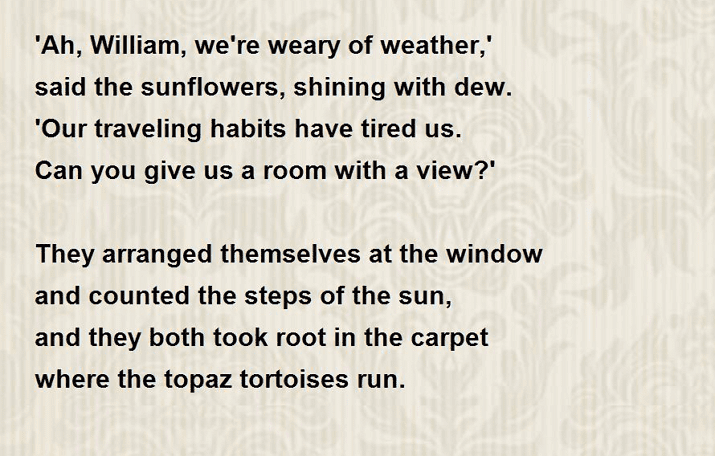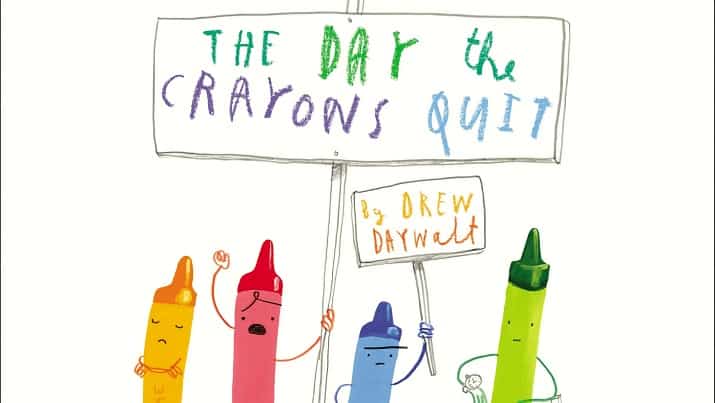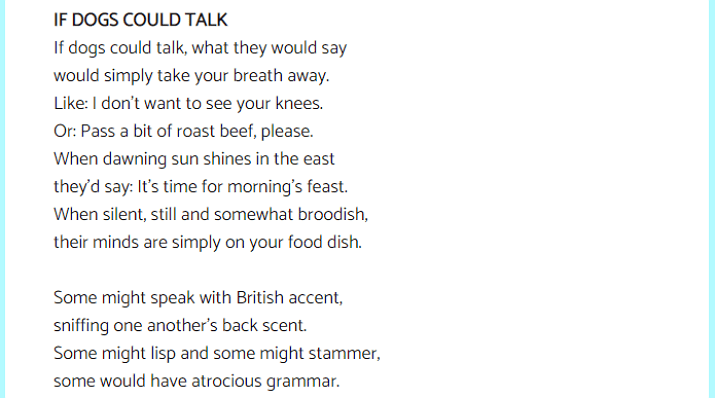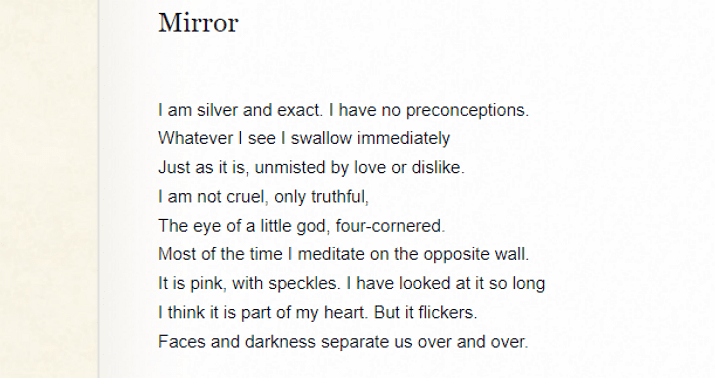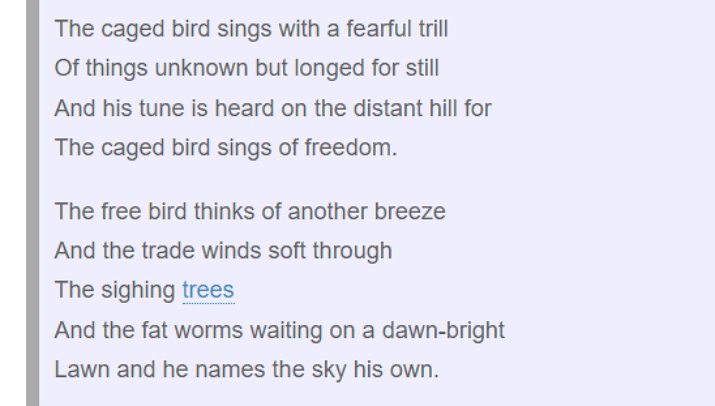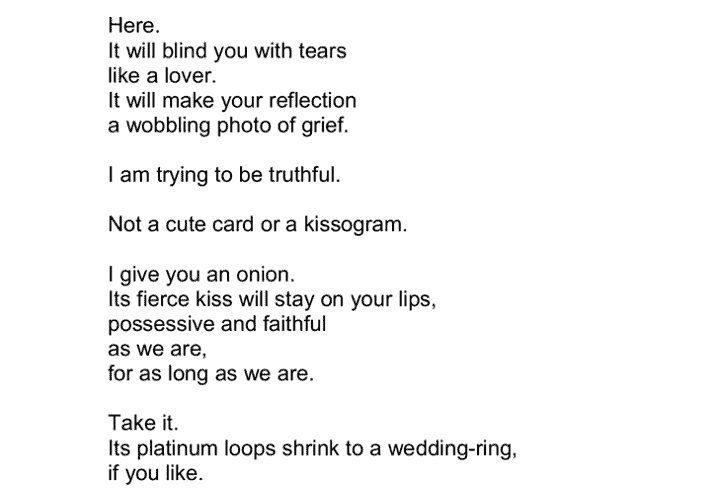Personification is a fancy word to describe when writers ascribe human qualities to something that isn’t human. It’s a literary device commonly found in children’s literature.
Writers deploy it to make an otherwise confusing and boring explanation understandable and exciting. They also use it for dramatic flair and to bring a sentence to life in the reader’s mind.
For example, you can have a long-winded description of stars and the effect of light refraction as they race through our atmosphere. Or a writer can simply say, “the stars winked in the sky.”
Now the reader knows the writer is referring to twinkling stars, and it’s more compelling.
Here are 50 other personification examples for kids.
Best Personification Examples For Kids
1. “Actions speak louder than words” – St Anthony of Padua
This truism is attributed to a sermon delivered by St. Anthony in the 1200s. It means the things people do reveal their true intentions more than what they say.
We know actions ‘can’t speak’ but phrasing it this way emphasizes the contrast with the words spoken by a person.
2. “Do you recall what was revealed the day the music died” – Don McLean
Music cannot die. But in the lyrics of this 1971 classic, Don McLean personifies music to capture the shock and horror of losing his childhood music heroes in a plane crash.
His use of personification was so effective that the phrase became the default nickname for the plane crash.
3. “I Wandered Lonely as a Cloud” – William Wordsworth
image source: Scribd
Personification occurs in two instances here. In the first verse, William Wordsworth calls the cloud lonely. Clouds cannot be lonely.
Later, he says the stars “stretched” and were “tossing their heads in sprightly dance.” It is another way to describe a sky full of twinkling stars.
4. The city that never sleeps
This famous nickname for New York captures the city’s sprawling nightlife and multiple 24/7 services. It is also a typical example of personification.
But the phrase is not unique to New York. Other cities like Barcelona, Berlin, and Lagos have also been called “the city that never sleeps.”
5. The camera loves her
A camera is an inanimate object that doesn’t have feelings. But instead of saying someone is photogenic, we usually say the camera loves them. This is one of the many ways we use personification to simplify ideas in everyday conversation.
6. “The Fog “- Carl Sandburg
image source: Tumblr
Personification is common in poetry because it enables the writer to communicate complex feelings and thoughts in short lines.
Here, Carl Sandburg personifies fog to express his appreciation for small natural events. It also makes a mundane occurrence more charming to the reader.
7. A picture says a lot
Pictures can’t talk, but we can learn a lot about a person or scene from looking at one. How do you express the breadth of information contained in an image? You personify it.
“A picture says a lot” has the same meaning as “a picture is worth a thousand words,” but personification is only in the former because of the word “says.”
8. The bridge stretched over the interstate
We know that a bridge is an inanimate object, and only people and animals can stretch. But this phrase conjures an image of a long and curved bridge.
This description is more succinct and interesting than a detailed breakdown of the bridge’s length and shape.
9. “Two Sunflowers Move Into the Yellow Room” – Nancy Willard
image source: Poem Hunters
The entirety of Nancy Williard’s 1981 poem is an excellent example of personification. Here, she uses it to tell us about the sunflowers’ in William Blake’s home growing towards the sunlight.
Her description could have been academic or bland. But by pretending sunflowers can talk, she creates one of the most widely cited poems from the 19th century.
10. “If 10% is good enough for Jesus, it oughta be enough for Uncle Sam” – Ray Stevens
We wouldn’t have this iconic line without personification. Uncle Sam is the national personification of the US federal government.
And Ray Stevens uses it here to express his frustration with government taxes in fewer words than a Wall Street Journal op-ed.
11. The moon turned over to face the day
While the moon does turn, it is a celestial object with no face. But it’s more evocative when a writer uses this phrase instead of simply writing “At dawn….”
Personifying the moon this way is more engaging and creates a memorable image of early morning in the reader’s mind.
12. “The Little Engine that Could” – Watty Piper
image source: Barnes and Noble
The fun thing about personification is that it is everywhere, including book titles. In this famous children’s story, the narrator gives the engine the human ability to persevere and never give up.
The story teaches kids the value of optimism and hard work and offers many examples of personification.
13. That cheesecake is calling my name
This phrase has been said countless times. It may not be cheesecake, but saying food is “calling” is a typical instance of personification in everyday human expression.
We use it when we want to describe the irresistible allure of a specific meal.
14. “Thriller” – Michael Jackson
“You try to scream but terror takes the sound before you make it
You start to freeze as horror looks you right between the eyes
You’re paralyzed
‘Cause this is thriller, thriller night”
Terror can’t take things, and horror does not have eyes, but Michael Jackson personifies them to describe the feeling of powerlessness.
15. “Kleenex says bless you” – Kleenex
image source: Ginger Geyer
Ad copywriters regularly use personification to endear their products to customers.
This tagline from Kleenex’s 1985 commercial tells potential buyers that Kleenex is the equivalent of the caring person that says “bless you” when you sneeze.
We like those kinds of people, so we will like Kleenex.
16. Lightning danced across the sky
One of the tell-tale signs that a sentence or phrase contains personification is a human action verb in the predicate.
In this case, the verb is “danced,” and the subject is lightning, which is inhuman.
Personification examples like this are common in literature because they make the text dramatic and engaging.
17. This advertisement speaks to me
While they may contain a human subject talking about the product, advertisements are by themselves non-human.
An ad cannot talk, but phrasing like this lets us express our connection to inanimate ideas at a human level. It also represents a deeper meaning than saying, “I like that ad.”
18. Kiss your integrity goodbye
The moment a person loses their integrity is, on its own, a dramatic moment. Whatever trust others had in them is gone, possibly to never be recovered again.
Kissing one’s integrity goodbye evokes a vivid image of betrayal and loss that matches the moment.
19. “Whatif “– Shel Silverstein
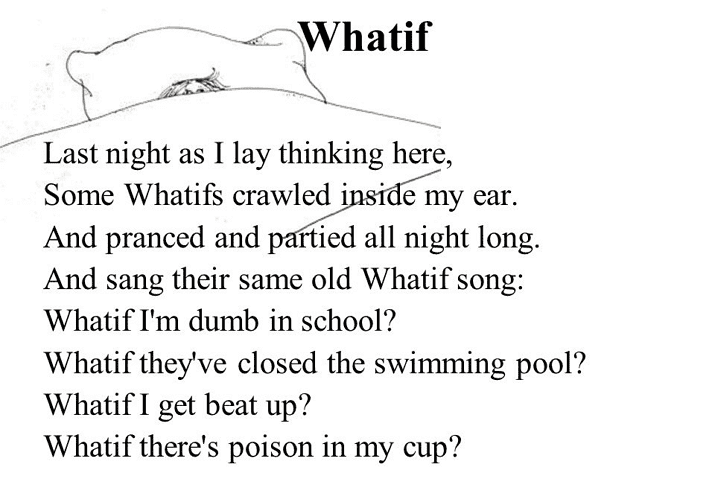
Doubt, ever-present as it may be, is a thought. It doesn’t have legs or hands to crawl or dance, nor does it have a mouth to sing.
But the famous author Shel uses personification to illustrate how it takes over our mind and replays the same thoughts repeatedly.
20. Time flew by
The ‘time flew by’ vividly describes how much time has passed. To many physicists and philosophers, time does not exist, much less have wings to fly. But this popular idiom is an excellent example of how we use personification to make abstract ideas vivid.
21. “The heart wants what it wants— else it does not care…” – Emily Dickinson
The heart, while inside a human, is not human. It cannot want things, nor can it care for something. But personifying it like this enables Emily to communicate the helplessness and illogic of human desires.
Much like the reason we use personification, our heart’s desires may not make rational sense, but it makes our world exciting.
22. I like milk, but it doesn’t like me
You can say you’re lactose intolerant, or you could say the milk doesn’t like you. The former is a statement of fact that conveys zero emotion. It’s boring.
The other is a personification. Giving milk human ability to like things creates conflict and drama and it’s definitely more interesting.
23. Hey Diddle, Diddle
image source: Slide Player
Nursery rhymes are chock full of personification because they make it easier for kids to understand complex ideas. In this example, the dish ran away with the spoon.
Dishes can’t run, but this phrasing allows the author to communicate the feeling of wonder and surprise.
24. The thunder was grumbling in the distance
This type of description, common in literature, uses the human ability to grumble to create an evocative image of thunder following heavy rain.
Time and time again, we see that the best and most common example of personification is making the mundane interesting.
25. Don’t let life pass you by
A popular and helpful piece of advice is never to let life pass you by. It means you shouldn’t wait on the sidelines and miss out on experiencing the things you want to.
It’s a weighty subject accurately summed up by personifying life as a moving vehicle and the person as a passenger who chose not to get in.
26. The door stood guard against the relentless wind
This is another personification example you may have come across in several novels. This example portrays the door as the last line of defense against strong winds.
This description creates a dramatic scene of the door consciously protecting people inside the house against a destructive outsider. But it’s still a door.

Milk is a popular substance to personify because people love it. The copywriters who came up with Oreo’s tagline also know this.
“Milk’s favorite cookie” is their way of telling us that Oreo cookies pair best with milk. If we love milk, we should buy Oreo.
28. Your last chance just walked out the door
When a person walks out the door, it typically means they are leaving for a while. That’s why we use this expression to dramatize the loss of a huge opportunity.
It means the person to whom this phrase is directed won’t see an opportunity like that for a long time, if at all.
29. “The Walrus and the Carpenter “- Lewis Carroll
“The sun was shining on the sea,
Shining with all his might:
He did his very best to make
The billows smooth and bright —
And this was odd, because it was
The middle of the night”
This example of how personification can appear anywhere shows up in this classic Victorian nonsense verse from Lewis Carroll.
30. “Shoe Talk” – Shel Silverstein
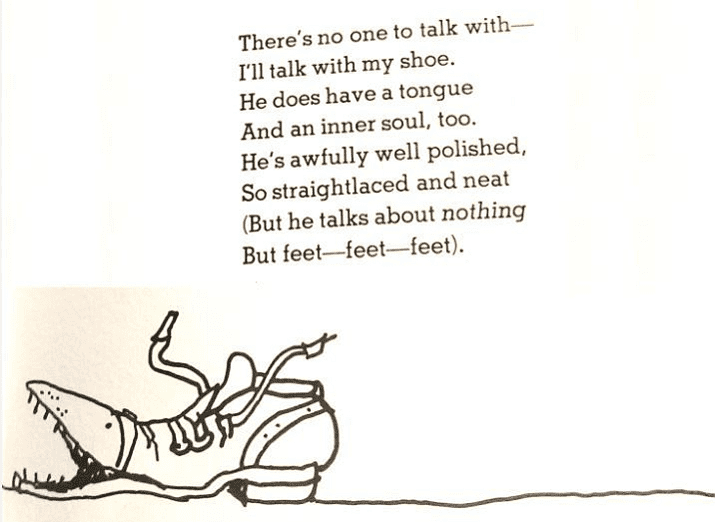
You can also deploy personification to construct a narrative. Here, Shel uses it to reframe a scene of himself talking to a shoe.
In doing so, he’s discovering the shoe’s humanity rather than being a crazy person talking to a shoe. It’s one of many brilliant examples of this literary device.
31. The sky was angry last night
The phrase is about it raining heavily last night. By giving the sky the human ability to feel anger, the speaker matches the sensational nature of the event.
This way, the rain didn’t just fall as part of a natural cycle. It was a deliberate display of vengeance.
32. Justice is blind and, at times, deaf
This popular expression about justice is used to describe its impartiality. Personifying justice as an entity without eyes or working ears tells us it lacks these sources of bias.
There are no eyes to be swayed by looks or ears to be persuaded by words. It remains objective always.
33. My alarm yelled at me this morning
One of the better use cases of personification is to capture a feeling accurately when the literal telling won’t do. In this case, people use this expression to say how it felt when their alarm woke them up.
They are ascribing the ability to yell to their alarm to express how it feels when someone yells at you.
34. “Timon of Athens” – William Shakespeare
image source: Backstage
In this excerpt from one of the best literary minds to ever exist, William Shakespeare personifies four objects as thieves. It’s how he describes their relationship with one another, far more romantic than any explanation you will get in a science class.
35. The leaves let go of the tree and danced to the ground
The beauty of personification as a literary device is you can create one with any object. Using personification to describe falling leaves is a favorite move by many authors.
They use it to infuse detail into a scene and force the reader to recreate each movement in their mind.
36. “Dinnertime Chorus” – Sharon Hendricks
“The teapot sang as the water boiled
The ice cubes cackled in their glass
The teacups chattered to one another.
While the chairs were passing gas
The gravy gurgled merrily
As the oil danced in a pan.”
Sharon Hendricks personifies the teapot, ice cubes, teacups, chairs, gravy, and oil to create a busy image of each object playing its part in a dinner routine.
37. “Unseen, in the background, Fate was quietly slipping the lead into the boxing gloves. – P.G Wodehouse
It’s one of many brilliant lines in Very Good, Jeeves. It’s also an excellent example of how the well-placed use of personification can elevate a story.
Here, fate is not an idea or belief. It’s an invisible living entity altering the course of the story.
38. “The Day the Crayons Quit” – Drew Daywalt
image source: USA Today
This example from a bestselling children’s book is a modern classic in using personification to explore different perspectives.
Each story reveals the individual problems of each crayon with the owner. Red is tired of being overworked. Black wants to do more than outline, etc. Plus, it makes a book about a box of crayons more fun to read.
39. My phone is not cooperating with me today
When we express our frustration with inanimate objects this way, we better describe our dilemma. A phone is an inanimate object that generally does whatever the owner wants.
When that’s not the case, it’s far more dramatic to say it’s not cooperating than say “it’s not working.”
40. This article says carrot is good for you
Personifying an article makes it seem more trustworthy than what it is: a bunch of ordered letters on a webpage.
Also, using this expression enables us to make definitive statements without personal responsibility. It’s not me that said a carrot is good for you. The article did.
41. “If Dogs Could Talk” – Denise Rodgers
image source: Classroompoems
Personification here is used to construct a different narrative and explore an idea from a different perspective.
We know dogs cannot talk, but by pretending they can, the author imagines what they would be like, making it a fascinating read.
42. The first rays of morning tiptoed through the meadow
Adding dramatic flair and creating rhythmic prose is one of the common reasons to use personification in writing. It creates a harmony of actions that allows a specific picture to form in the reader’s mind.
In this example, sun rays can walk and are therefore able to sneak through the meadow.
43. The old floorboards groaned under the intruder’s weight
Everyone is familiar with the sound of a creaking floor. But by deploying personification, you can transform the warmness of familiarity into a terrifying memory, as shown in this example.
There are several alternate examples like this in novels and poems because it is very effective.
44. “The Mirror” – Sylvia Plath
image source: CourseHero
Sylvia Plath gives the mirror the ability to speak and immediately immerses the reader in its perspective.
It is a far more engaging way to explain how a mirror works and its relationship with its environment. And the main idea of the poem is how it sees the woman who uses it every day.
45. Hurricane Kathy devoured everything in its path
Many words accurately describe the physical behavior of hurricanes, but none of them capture their devastating effect like the personified verb: devoured.
This poetic expression creates an image of a larger-than-life entity that swallowed everything that stood against it. It is a powerful explanation of a natural event.
46. Our society needs strong leaders
A society may be made up of people, but it is by itself an idea. A physical human entity, Society, does not exist. Therefore, it cannot have needs.
When writers use personification like this, they use it to spark a collective feeling of responsibility and action.
47. “I Know Why the Caged Bird Sings” – Maya Angelou
The caged bird in Maya Angelou’s seminal poem, the caged bird is not a mindless being. Instead, it’s given the human ability to sing, feel fear, and long for freedom.
But the bird is not the only personified non-human. There are also “sighing trees.” Trees don’t sigh, but the personification makes the bird’s inner thoughts alive and relatable.
48. The Infinity Saga box set was his only companion
Companionship can only happen between a person or an animal. But the feeling behind it is not unique to them.
Personifying objects like this example allows writers to express those feelings understandably.
The reader may not know what an Infinity Saga box set is, but they know what it means to have a companion.
49. “Valentine” – Carol Ann Duffy
image source: StudyLib
From start to finish, Carol Ann Duff’s Valentine is a poem about a personified onion, but the device shines most in the later verses. The onion leaves a kiss, and it is possible and faithful.
In this example, we can see the effectiveness of elevating the mundane by infusing it with human capabilities.
50. “Time Waits for No One” – The Rolling Stones
Again, the Rolling Stones personify time as someone with the agency to make decisions and move around. It has a similar meaning as “don’t let life pass you by,” further demonstrating how you can use personification to say the same thing in different yet provoking ways.
Wrapping Up
Personification is a figurative language used to grab a reader’s attention. Kids of all ages can learn to use it by describing the objects around them with human behavior.
You can use it to demonstrate creativity, exercise poetic skills, or create humor. That’s what makes it a fun literary device.
Cassie Riley has a passion for all things marketing and social media. She is a wife, mother, and entrepreneur. In her spare time, she enjoys traveling, language, music, writing, and unicorns. Cassie is a lifetime learner, and loves to spend time attending classes, webinars, and summits.


